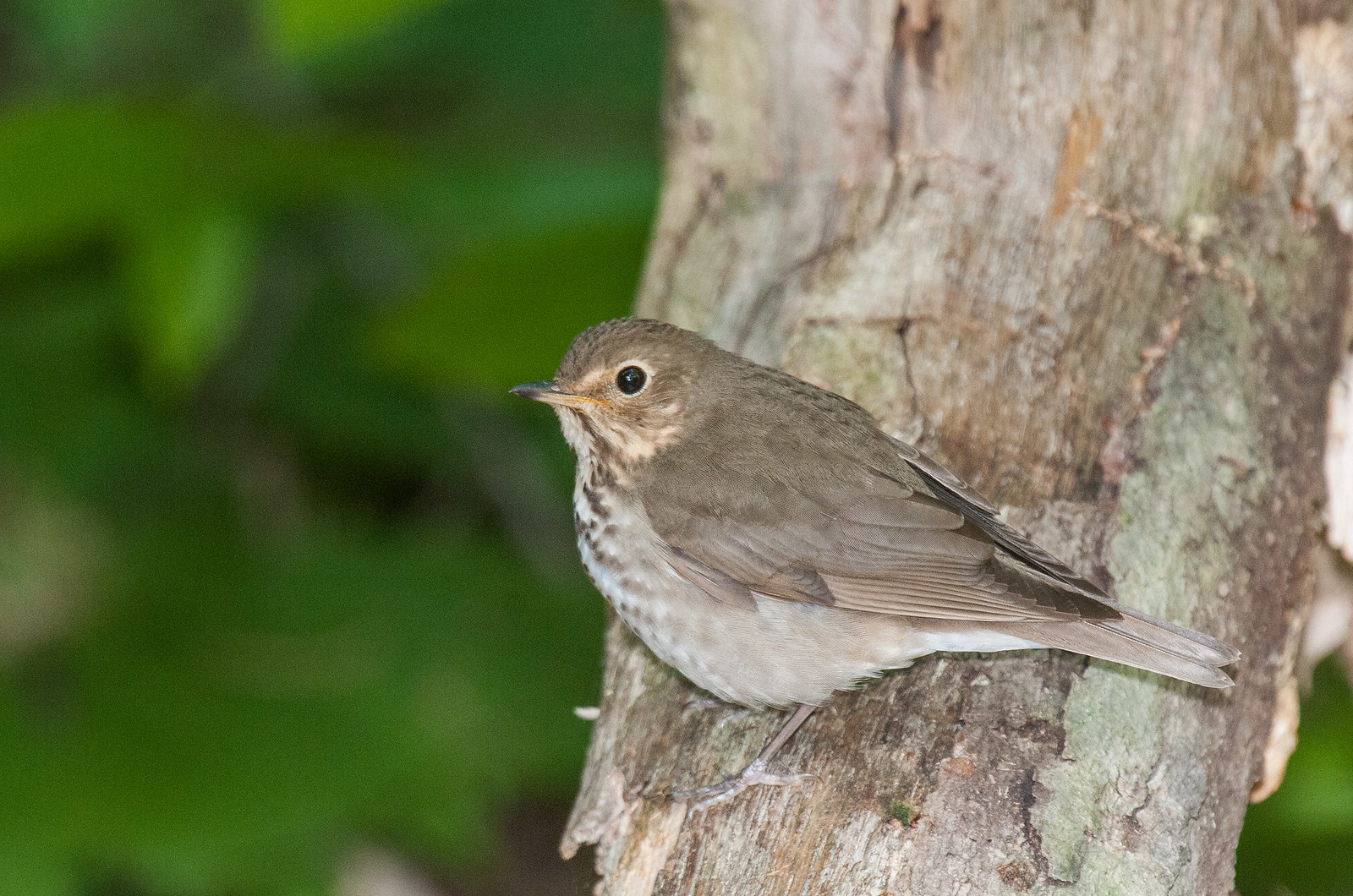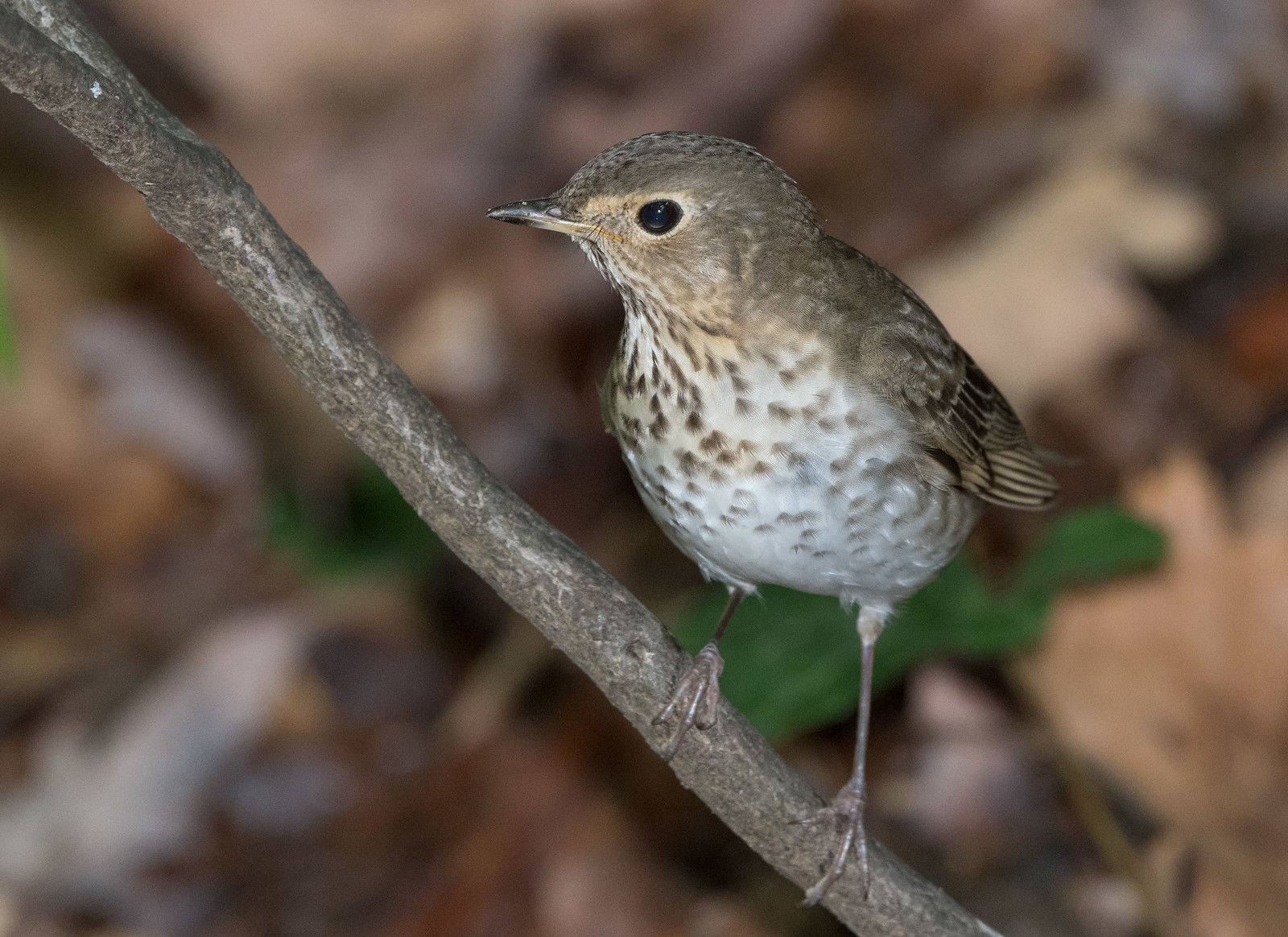| Early Spring Date: | April 25 |
| Late Spring Date: | May 31 |
| Best Dates to See in Spring: | April 28 - May 28 |
Spring: Swainson's Thrushes are common at Monticello Park. They begin to arrive in early May, and the best time to see them is during the second and third weeks of May. The ones passing through Monticello are on their way to breed in Canada and the northern United States.
Fall: An average of two dozen Swainson's Thrushes pass through Monticello each year during fall migration. The best time to look for them is from the middle of September through the first week in October.
Where to See Them in the Park
Swainson's Thrushes are usually seen on the ground. A lot of them forage on the ridge, and some forage near the dog exercise area. Occasionally, they will go into the stream to bathe or drink.
Physical Description

Adult male and female Swainson's Thrushes look similar, and plumage does not vary between spring and fall. The back is olive brown, similar to the back of the Gray-cheeked Thrush. One of the best fieldmarks is the white eyering and white "spectacles" (the area between the eye and the bill).

The spotting on the breast is heavier than on a Veery.
Vocalizations
Swainson's Thrushes sing more at Monticello than some of the other spotted thrushes. Their beautiful song is an ascending spiraling whistle. The call note is an emphatic WHIT, and it often can be heard along with the song when the thrushes are on the ridge. Some vocalize near the entrance to the park.
Hear the vocalizations of the Swainson's Thrush.Notes
The Swainson's Thrush might be split into two species. They winter in Central and South America, and there are two distinct wintering populations who are becoming genetically different.
Origin of Names
Common Names: Swainson's after the 19th century English naturalist William Swainson. The origin of thrush is unclear, but it might come from the Anglo-Saxon thryce, which means thrush.
Genus Name: Catharus means pure, possibly in reference to thrush song.
Species Name: Ustulatus means singed, from the plumage color.
Swainson's Thrush video footage
Return to the Index
